After getting myself into building a WordPress 6 FSE Theme and all the pain I experienced (getting used to the JSON, some bugs in the beta version and the troubles about embedding p5.JS or variable fonts), I thought, ok… maybe I am too critical, so now let’s face the challenge and rebuild my homepage in Oxygen Builder and Zion Builder and compare all of those.
My targets:
- Check the “speed” after setting up the basic structure and functionality of the homepage
- Share impression of the builder as of July 2022
- Finally make a decision to switch to another builder or core for this website
To do so, I used some subdomains (to be transparent, also to my visitors) and rebuild my site in those tools. I must admit I didn’t fully rebuild it always the same way. As being said often, to get the look of a 80% finished product I would rebuild the stuff in around a day or faster, depending on real life interruptions; to get to the 100% it would take much much longer, as the tricky parts are in the background.
For all solutions, I didn’t evaluate on the indieweb compatibility or investigated further, why my FWA plugin wasn’t working with the other solutions. But regarding the JS load intended by my homepage sample and Fonts being used, all should be the same. Same applies for the content itself. So in terms of the speed ranking, we should be almost “fair”.
The competitors – WordPress Site builders
Oxygen Builder
Oxygen builder is here for quite a while and kind of the fastest page builder (in terms of the output quality) for WordPress for many years. The user base is strong, and you will find many tutorials, also for tricky parts. Regarding my special cases variable fonts or p5.js I didn’t find proper ones to directly match my tasks, but embedding JS isn’t an issue in builders anyway. On the font issue there’s a way via a code snippet from Matthias Altmann to integrate own fonts (also variable ones), but I ended up embedding it directly via CSS.
Also, Questions about how to use the repeater or how to set aria-labels for accessibility could be fixed after a little investigation.
All in all, you won’t get lost too much building a site in Oxygen (at least if you have a intermediate understanding of CSS and HTML Structure). As there’s still a lifetime license it could be an attractive option to being used, though the team is also building on a new builder, called breakdance that targets a more “elementor” like target group.
During my process with Oxygen, I uncovered one strange issue: I really destroyed my site (destroyed the template connection and couldn’t restore it). I handed it over to support and they reacted in a good timeframe of around a day. They did a duplicate of the site on one of their sandbox and couldn’t reproduce the issue unfortunately and gave it back to me as it should be a hosting issue.
Honestly, I didn’t double check if it’s really about hosting or not. I got an own idea how to fix it (by deleting some content element), but I lost some trust in the overall stability of the software. I never had such an issue with WordPress Core or Elementor builder ever before. Elementor has some strange bugs, if you have larger Websites with a lot of added functionality, such as custom post types or toolset, WPML and so on, there I also experienced some “lost” of the templates, but nonetheless, we speak about a complexity mostly caused by many plugins and stuff. In the elementor case, you mostly resave the templates and you are done and everything is fine again.
As Oxygen has a great feature of copying the JSON code for each block, you could easily transfer the data somewhere else. I would say the way Oxygen implemented it is a typical Oxygen way, they show you the code directly. Other builders, such as Elementor or Zion could also copy the JSON from elsewhere, but there you export a file and import the file. What you like most, depends on the situation, I guess. To “store” some backups of designs/layouts, the file way is better, to be fast, the copy paste is better.
My final conclusion on Oxygen?
I like it. It’s kind of a webflow for WordPress, but I like it more than webflow. It has a lot of developer friendly functionalities and the more you can develop yourself, the better you could handle the tool. As it’s around for some time, you find good help, mainly from developers. In my point of view, it’s better to have more advanced tutorials around. You find core functions mostly at the tutorials of the publisher themself. The real interesting things are the tricky ones.
I am not sure though if I would use it for larger scale client sites were we speak about 500 plus pages throughout more languages. It really depends on the task and the requirements. But in any case, it is worth a look.
Elementor Builder
I won’t write much on elementor builder. The site here is at that moment build in elmentor. As I rebuild the site in many other builders, without fixing some issues on indieweb and fwa, it might be possible to change to another builder or a hybrid solution.
Elementor is one of the most popular builders. In terms of ease of use I would say it is unmatched to all rivals (also beaver, divi, bricks,…). As it is a personal thing, I would say, try the free version and compare it for example with the free zion builder version. You could also try bricks in a sandbox or oxygen. Honestly, those are all I would recommend comparing.
Being popular leads to a lot of help and tutorials and a lot of third party support (that could be the decision maker on a client project). But it also leads to a lot of criticism of course, so there are also a lot of elementor haters. Being objective, there is some kind of bloat in the code and the html being generated from the builder, but one must admit, it also depends on the way you build a site. I am sure you could mess up your site with every builder. Honestly, I can’t say I build my sites in the best, most efficient way (in terms of loading times) in Oxygen or Zion; in elementor I could say, I did it in a quite efficient manner.
I guess I don’t need a conclusion on elementor here. I still like it and it’s a great tool. In terms of development speed (from scratch, because I am not that prebuild type of guy), I would still say, that the speed to create a new site is unmatched. But if your client’s objective is the fullblown SEO Speed stack, i wouldn’t recommend Elementor.
And even more important: Use Elementor only as a page builder for setting the templates, doing special pages, popups, and stuff, but don’t use it for News articles, Blog posts or similar text heavy content. Speaking of Stories, it depends, what you aim for. If you want more interactivity in the stories or you aim for some “scrolly-telling” (a advertising buzz word being used in Germany), elementor could be great. But for text-heavy pages, I would recommend using WordPress core!
Zion Builder
Zion builder is a new contender on the market. Like bricks, another new rival to close the gap between Oxygen builder and Elementor builder. By the way, I also tested bricks and thought about making a version with bricks, but I stopped quickly again. Working with too many builders and getting used to their own building syntax, could be a huge time waster. Comparing the sandbox version of Zion and bricks, I went for Zion. There are also some charts on the web on some comparison about the “bloat” or weight of builders and Zion seemed to be the star of the rankings.
Zion builder is being said one of the fastest WordPress Page builders. In terms of opening the builder itself I would say yes, it is the fastest. In terms of the “export” of the code, we will see in the comparison. The thing with a new product is, that it is mostly unfinished. So we see some interesting ideas, using a wireframe view (good for all divi builder lovers) for example and a builder interface that is focused on the elements you want to add to the page.
In my point of view the interface misses the main point of using a builder at the moment. A simple way to describe this impression is, that you can’t see the available elements at first. Most other builder use the left column to display the elements selection. In Zion they try to do it all via the main view (or you could also add them via the tree view, a feature I use for all builders I am not experienced yet, a lot). But instead of putting the options for the elements first, the opener always starts with layouts, followed by a nested tab elements and library.
In terms of my understanding of what a builder is mainly intended, for building sites quickly (with elements), the elements should be priority. As this builder strongly relies on the column structure and the layouts I understand their need to get users used to this way of building, but putting the library at the same hierarchy level, and even worse, giving it an extensive big window and having only a tiny window for the elements themself feels absolutely wrong.
But I wouldn’t say it’s an old-school interface. For me currently they didn’t separate “expert” mode and “beginners” mode good enough why both parties could get annoyed.
Regarding expert functionalities, one must get used to the structure, especially if you look at the menu and all the single elements you could influence via own selectors. So, getting used to their naming convention is essential. Unfortunately for Zion, I couldn’t fix the issue about accessibility. In Oxygen accessibility is also not a “core” functionality, but you could do some workarounds by using the function to “add attribute” and assign aria-labels, titles, and stuff.
In Zion, I got no idea what this element even does. They have an element called “custom attributes” and I thought, yeah, let’s use it for aria-labels and things like this on the mobile menu, which didn’t have any labelling. But unfortunately, there seems to be a bug as I could use it for other elements, but not for the Menu trigger button. At least, also my try to get feedback from support (on a far easier issue). My support experience with Zion was shocking. My answer to one request was complete non-sense and the other one on custom attributes wasn't answered for two weeks, after that they asked for screenshots or login.
Hopefully you don’t think I hate it… no. Zion has a lot of potential but as mentioned, it is a new contestant on the market. Maybe even a niche market to get a content creator for it. This is really the issue at the moment, they have only very basic tutorials (in terms of time, I didn’t watch them) and mostly the documentation couldn’t help me with “my” issues.
What is quite great about Zion is, that they still connect to WordPress Themes. As mentioned above, I create my posts in WordPress core within a template from the builder. Having the option to use pre-build themes, at first, I was super lazy and just used my finished WordPress 6 Core Theme i created in my tutorial to get started with Zion.
I got an interesting effect as I could see, where the theme got overwritten by Zion. What I didn’t like is that they overwrite button settings, though one is not able in the backend to define the appearance of the buttons in global settings. One can define font families (also custom fonts), custom icons, colors. Spacings, Buttons, link behavior, headline styles and others seemed to be hidden from me.
Regarding themes I only did a quick check on the performance, therefore I used one naked FSE 6 theme I created with a builder (and added my base colors), I used the “Zero” Theme and tried with the current standard WordPress theme. There wasn’t a clear result to recommend any solutions. For one reason I will mention in my resume, I would go with the Zero theme, as it has enabled menus.
My conclusion on Zion?
It’s a up and down. A product with potential. I would say the basic setup is great. The loading of the builder the base set of functionalities and some general strategic decisions are good.
What it really lacks is some more precise usability. Think of more precise naming. Why do you call one element “theme builder” and within the theme builder you speak of templates while the same word is being used within the builder under templates (v3.2.0).. Be precise. The theme builder feels completely mismatched in terms of the UI at the moment… also the functionality is strange. I really could name many many more issues here, but this connects to my professional background teaching user science for many years.
Speaking from another professional experience, helping clients to develop products, the ZION teams seem to be a bit to feature driven at the moment. A little clean up and concise improvement would help to create more follower or even a user base creating content for them.
A lacking user base is the main issue for ZION now. They need content creators for their product! But still, currently it might be an option for me for my personal blog as I like the integration of themes and as you will see in my scores, it seems to be the fastest one!
WordPress 6 Core Full Site Editing
One might discuss, if we could speak about a builder, when we name WordPress 6 core. I, would call it a builder, as it has building functionalities and similar to the other mentioned builders, you finally could generate your own theme without writing code.
I had my experiences in my tutorial here, my three-part series on how to build a theme there. For client purposes, I would say… If a product calls itself beta (most building features), you shouldn’t use it or at least think about using a beta product. And that’s really my summary on WordPress 6 – great capabilities, regarding ease of use, a lot of room for improvement, but nonetheless, an interesting approach I will use.
As I have also written. For writing blog posts, I will always favor core. Don’t go with a builder here, except you need a storytelling format. So WordPress Core should always be on the agenda. There are even things in WordPress 6 I would love to see in the builders. The Theme.json, as ugly as it is to get used to their syntax, I like it as you could write at the core and define global settings with "words".
For Oxygen there are also JSON ways that are kind of hacky (but possible), for Zion, there’s theme support, but their global styles are kind of too basic to compare... and most stuff is nested in the builder itself (same applies to Elementor – migrating an Elementor site could lead to a loss of all global styles you set in the editor, if you don't know how to work around – one file one could edit and modify is great, as no one news a workaround).
Zion Builder vs Oxygen Builder vs WP Core (6) vs Elementor in terms of speed
This is maybe a chapter many are looking for.
First, don’t take the results to serious. See them as an indicator! Doing the same test on the same test site again could lead in a result +-5; those tests are not precise! Also, my sites are not 100% the same. Still my original elementor site has most features on the backend side, such as working indieweb support and working FWA support.
Also regarding final tuning of the speed, I am sure, there will be some variety as some cache tool might work better with one solution, one with the other. So all sites used the plugin WP Fastest Cache and have almost the same plugins loaded in the backend (except the builders of course). Please also note, my server is not support http/2 which decreases my score anyway.
Lighthouse
Lighthouse tests are an early indicator and mainly interesting regarding all the tips they provide.
My baseline (Elementor Site) on desktop:
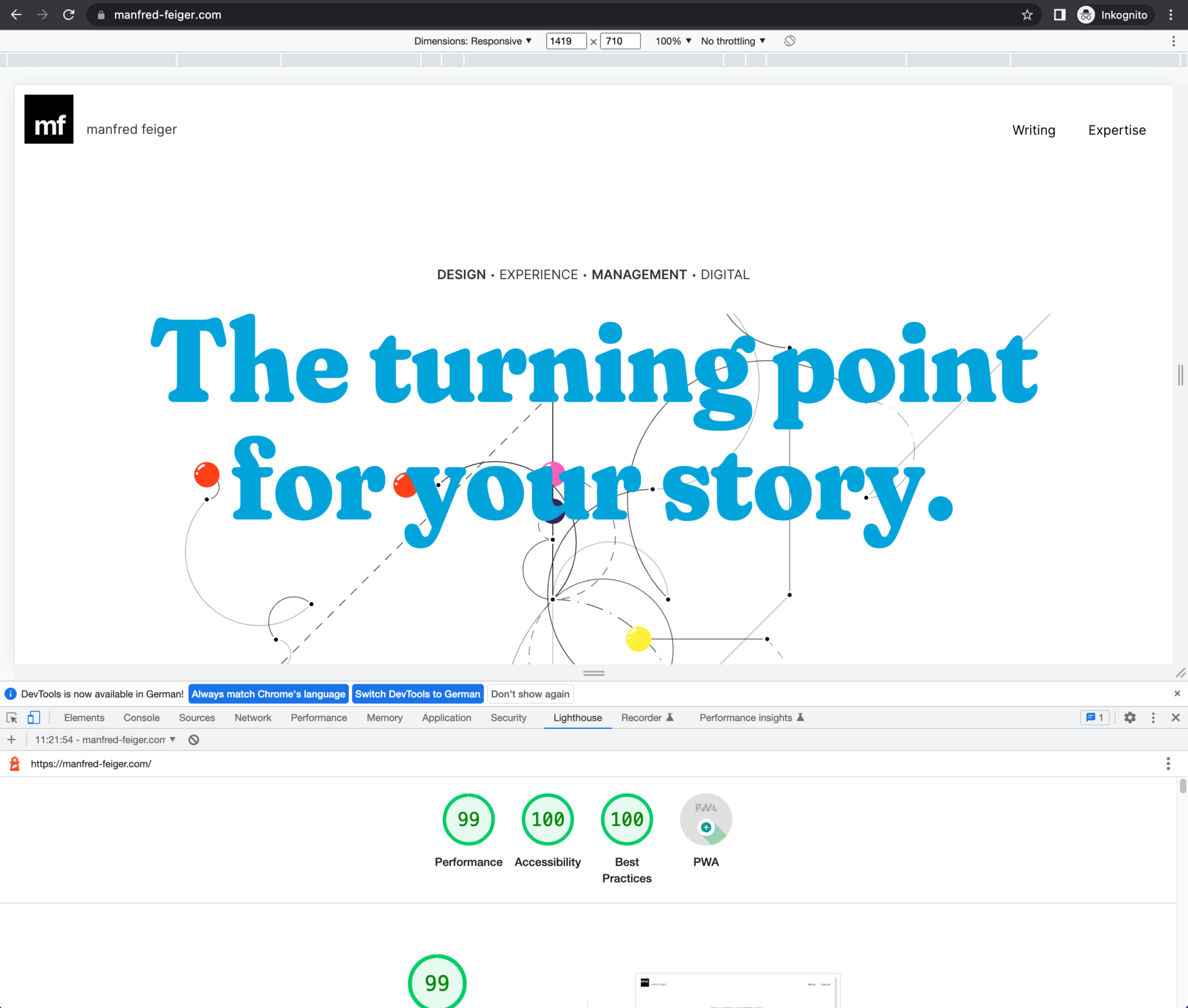

And now the challengers… ok, I post only Oxygen and Zion here, as both had 100 (WP-core interestingly only 99)… and none of the builders accepted the FWA plugin to work out of the box.


Looking at mobile, it gets more interesting:

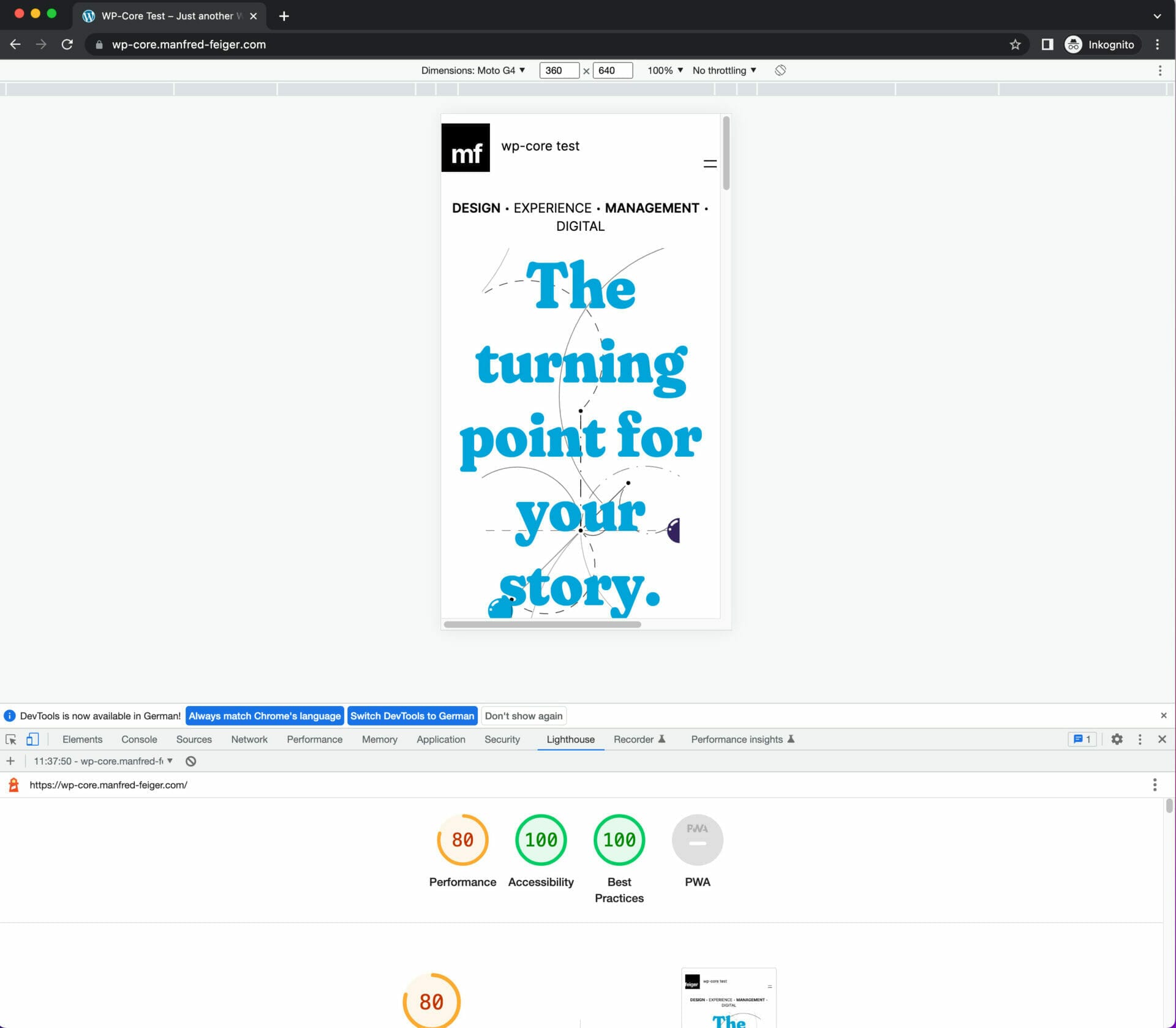


I assume looking at the data here, we could say there’s a winner: Zion builder. (As I have written before, unfortunately with some accessibility issue) – and to be honest, the lighthouse test in the browser is not the most accurate, but the tendency was towards Zion.
Gift of speed
To stick with mobile data, we go with the test of gift of speed and select a server in the Netherlands and mobile (Me and my hosting provider are located in Germany).
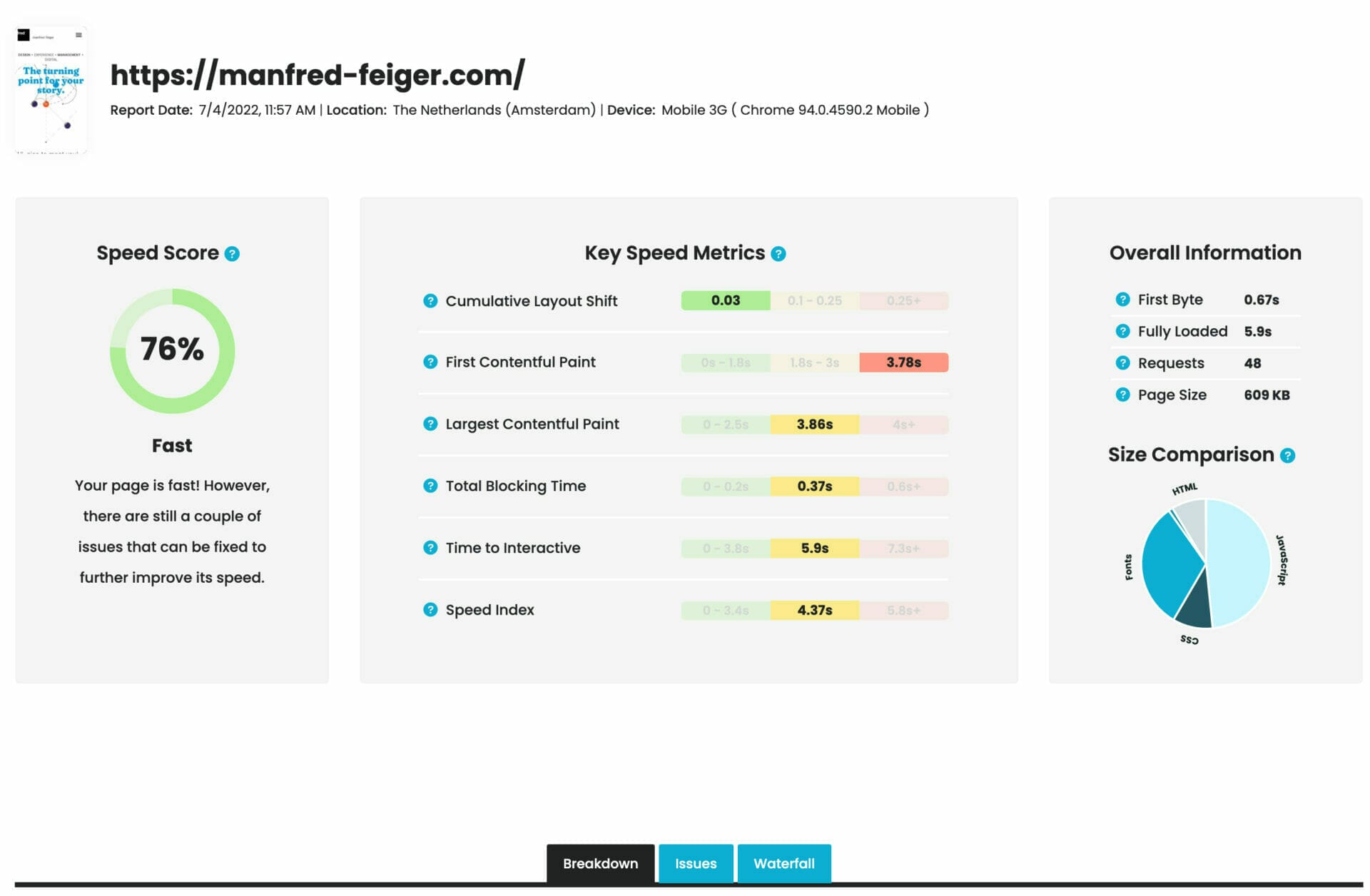



Surprisingly our next winner is WordPress Core, though the numbers throughout the stats are strange (Speed index is more related to the hosting environment).
GTmetrix


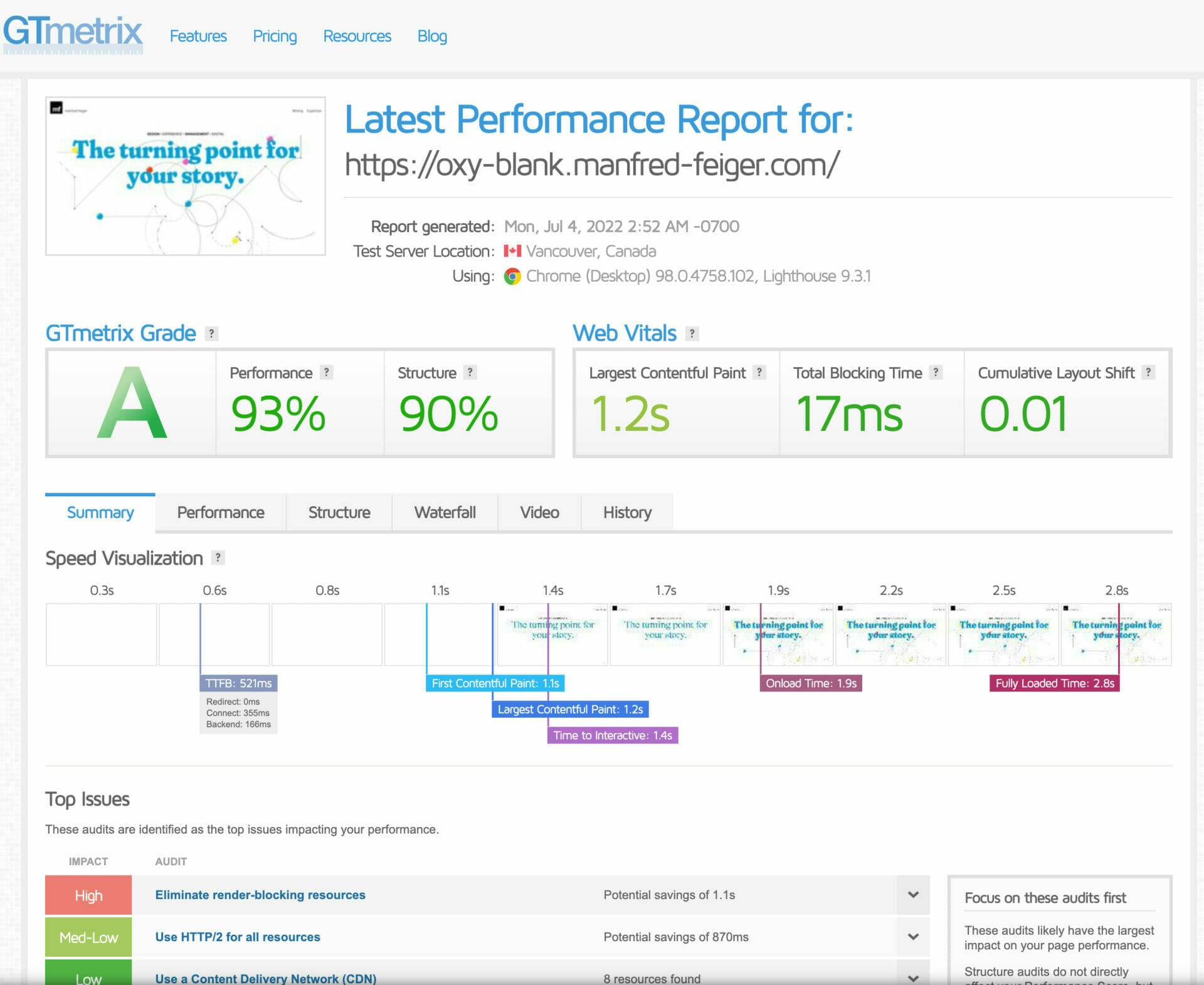
GT Metrix Oxygen builder result

For GTmetrix it was strange that WP-Core had a worse ranking than elementor, but regarding the stats we have our winner: Zion.
Pingdom

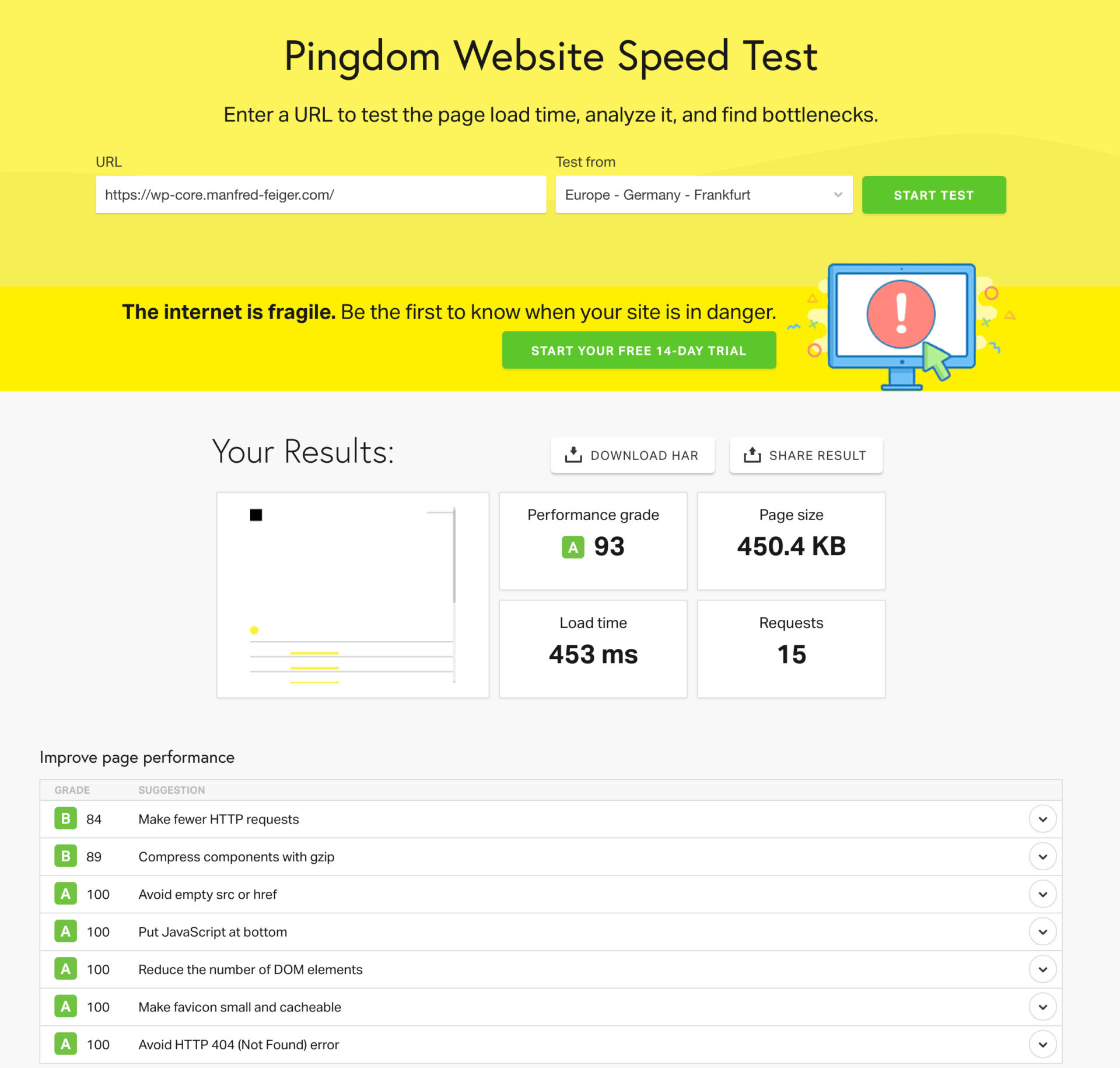

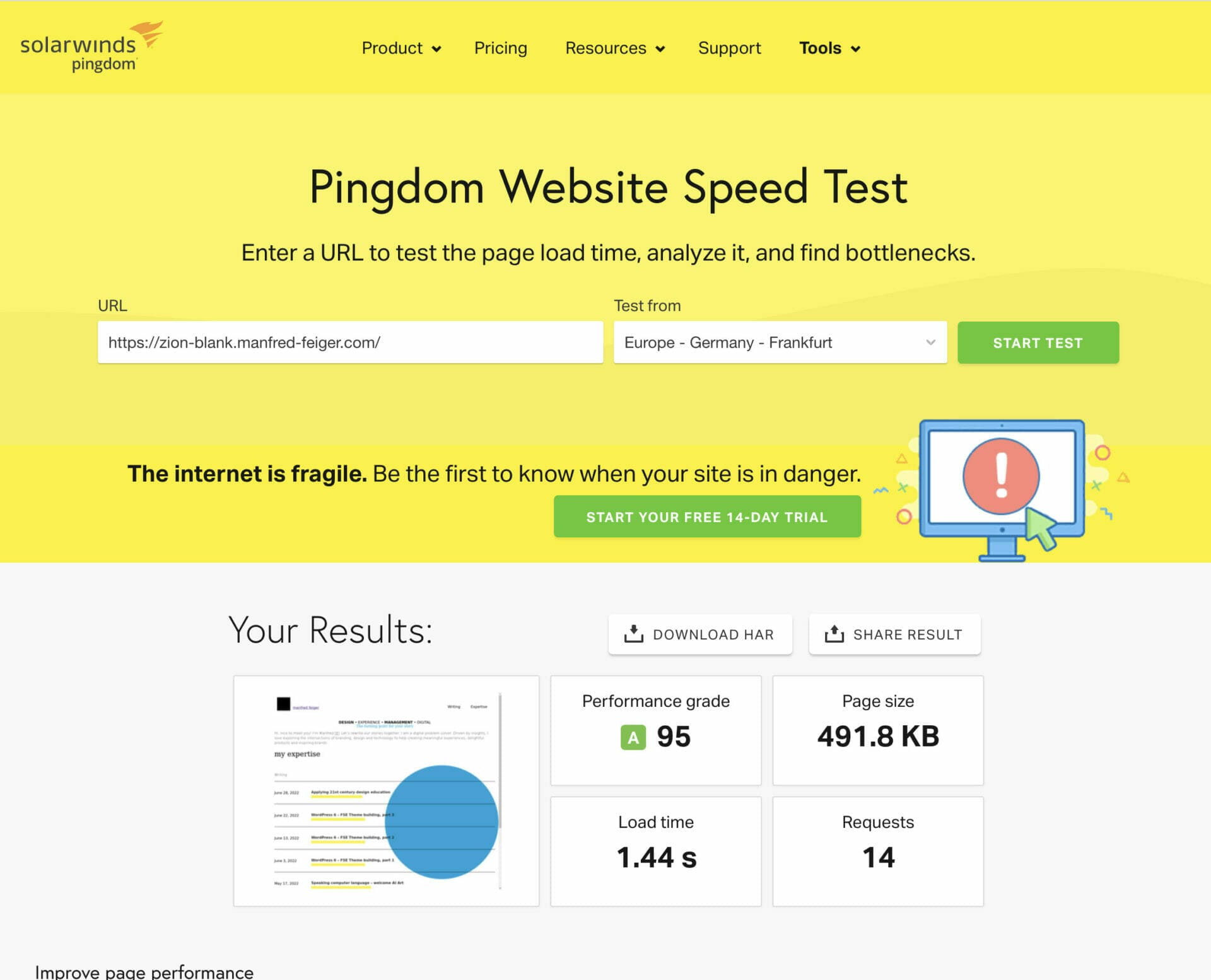
And again, for the pingdom test, also had a winning indicator: Zion.
Double check for an article page/post
As in the perfect world, most traffic is on the article pages, I double check with some article page examples. Here I would say all other solutions than elementor are winners (though I wrote the posts in Core!):




Resume on speed
I wouldn’t do a ranking 1 to place 4. Therefore, my evaluation isn’t as precise as it should be to speak about scientific. Having a p5.js element in the background that is randomly created, it could also influence the rankings.
Surprisingly the differences aren’t that huge and if we want to have ranking, the result from pagespeed.web.dev on mobile is maybe the best indicator to have an idea about our result:




As you might guess, elementor builder is the lowest ranked and Zion builder the highest. The difference between Oxy and Core is not big, but WP-Core misses some animation features, so Oxygen would be in my ranking before core.
All in all, my site type mainly consists of my fonts and my p5.js script. They create the biggest footprint of my site. All the other rest is some stuff from plugins and from the builder, so we speak about little room to shine.
After the results I am also a bit surprised that my theory I pointed out in my article on digital sustainability, that the effort in the creation of a product must also be included, got proven a lot. My most sustainable footprint will still be an elementor solution, if I need to build something from scratch.
Now that I almost rebuild my Site in all builders I stay with my theory and will switch my used solutions. I switch to Oxygen Builder. See more about my decision at the end of the article.
There are great features in Oxygen… to create blocks in Oxygen and release in core or go the Zion way with a more core template. For speed junkies, there’s a lot of testing needed to squeeze out every percentage.
On the sustainable side, there’s not so much difference, see my website carbon results; On that one my homepage had 0.10 g on Zion and WP Core.



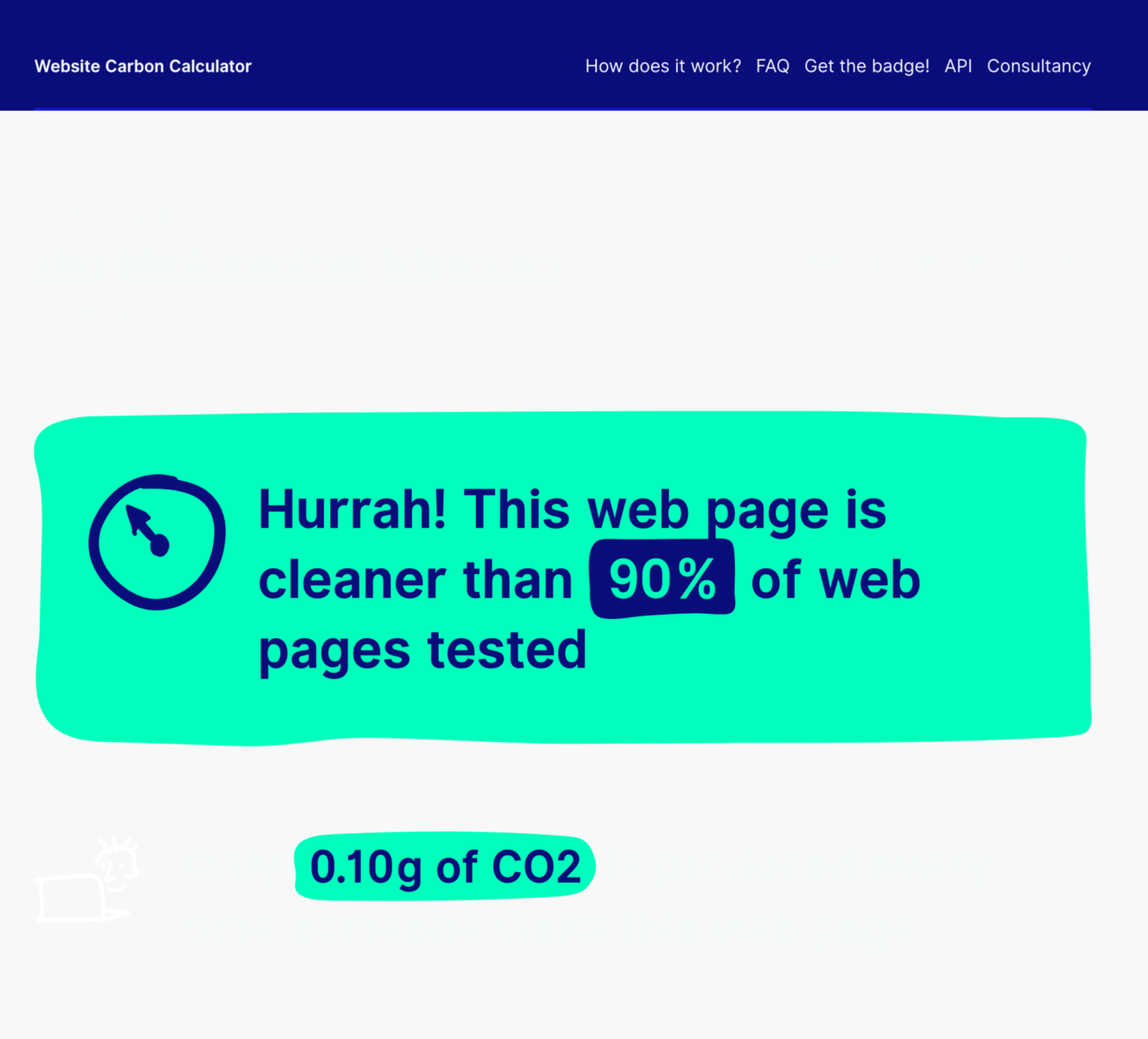
Resume overall
I guess the speed discussion is mostly exaggerated. If you know how to use a tool, you could squeeze out its limits. And sure, there are faster and slower options to go for. Interestingly WP Core 6 got amazingly fast, and I didn’t deactivate any bloat from them manually yet. Same applies for Oxygen or Zion, maybe both have some more squeezing options to go. But we are speaking of only few percent.
In general, the development in WordPress Core changed a lot. I think it is not essentially needed anymore to work with a builder. Builders need the integration to the core as they are faster and more intuitive.
My favorite in terms of having most potential options at the moment is Oxygen builder. I really want to test their integration with Gutenberg and combine Core and Builder. The other one is Zion builder. The speed advantage they have is a great start. If they fix their UI, some accessibility issues and maybe find an integration towards Gutenberg as well, they could be definite choice, if there wouldn't be other, more important things to consider.
Currently they are not my choice. They really need that push for content creators instead of feature, feature, feature. Go for UI and content creators to establish a wider base. Having more users gets more third-party support and slowly you could get the followers like Oxygen.
All tools have downsides. If you yourself know you want a fast site and optimize the design decisions and the code, you are doing the right job anyway.
I personally ran into some trouble now because I was undecided for some time. Regarding WordPress 6 it is maybe too early to judge, same applies for Zion; both have great potential, but it’s not sure where it will lead.
Regarding Client projects the choice depends on the task. The bigger the task will be, the more likely an Elementor solution will be as third parties could be the decision makers. Or it's Oxygen as it has a solide support. Zion is out, as their support quality (for my two issues) was horrible.
Many integrations, even for Oxygen Builder still fail; so, for example I also experienced some error messages with Jetpack and some caching errors. The other thing is the new WordPress Core that might bring more trouble to the builders.
My test sites
As being said, I rebuilt the sites in different systems. To give you full transparency, I share the links with you. Please note: While writing the article down, I switched my live environment from Elementor builder to Oxygen builder. But I did a "backup" of my Elementor page (without some CDN supports), so it might be slower as in my testings. As mentioned, if you know how to squeeze, the differences won't be too big.
- Please use the following credentials to look at the sites:
- User: preview
- Pw: ShowMe
All mentioned pages were created in July 2022, the WordPress Core Page earlier as a result of my articles on building a FSE Theme in WordPress. Feel free to send a comment, if a page might get broken, or you are absolutely not amused about my results 🙂
I also did a post on breakdance builder, see "breakdance builder – first impressions". You could also access the test site here with the same mentioned credentials: https://breakdance.mannilito.com/
3rd party support or general support
I assume most people will be lost if they go for Zion Builder and a new WordPress 6 install with the full FSE standard theme being activated …. if you want to create a Menu, you will be lost as the Zion builder is referring to the WordPress Option that used to be under appearance before; everyone who tried WordPress 6 Core and even the new standard theme, knows there’s no menu button anymore. Annoying… but you won’t believe what the support of Zion answered me on my question on how to create Menus in Zion (for FSE themes without an activated option for Menus) … they said it’s a hosting issue… that’s really the worst answer you could get.
How inexperienced this person must be? As my answer to the person was direct, the disaster is still ongoing. I send screenshots of twenty-two being activated with no menu button showing, of another theme being activated, menu button showing; and I still only want an answer if there's an alternative way in Zion to create menus... shockingly, now he wants access to the backend of my page 🙂 The other issue wasn't even answered yet and it's an issue being asked more than a week ago.
I was completely shocked about this kind of support… of course I only switched my theme to a theme with menu support to be able to edit menus; but can’t this dude say we are developing a solution or something? Really, this was my showstopper on Zion; if at a simple question every intermediate WordPress fellow should know a workaround, I get a feedback, contact your hosting provider, I could rate their support quality the worst grade. Cause going the “hosting provider” way is a time waster and all the money one saves paying a low fee for the editor, will be quickly spent with much more than 5 meaningless hours of working and life time.
To play save, use one of the major builders
One great thing about elementor, though paying yearly license fees, in more than 6 years using the product on at least 30 client projects, there were only few real issues and there was never a black hole of support. It is a solid product one must never forget. If you are new and you want to play save with WordPress and builders, go for a major builder with a huge base for now. Go for elementor or divi.
To explore, use a coder friendly builder
If you are more experienced and can already imagine a quick solution for the menu issue on Zion I mentioned, explore the advanced editors. There’s so much magic to be uncovered and even WordPress Core brings its own beauty now. My personal decision was Oxygen Builder and I keep my license for Zion to support them. Hopefully, they get better support.
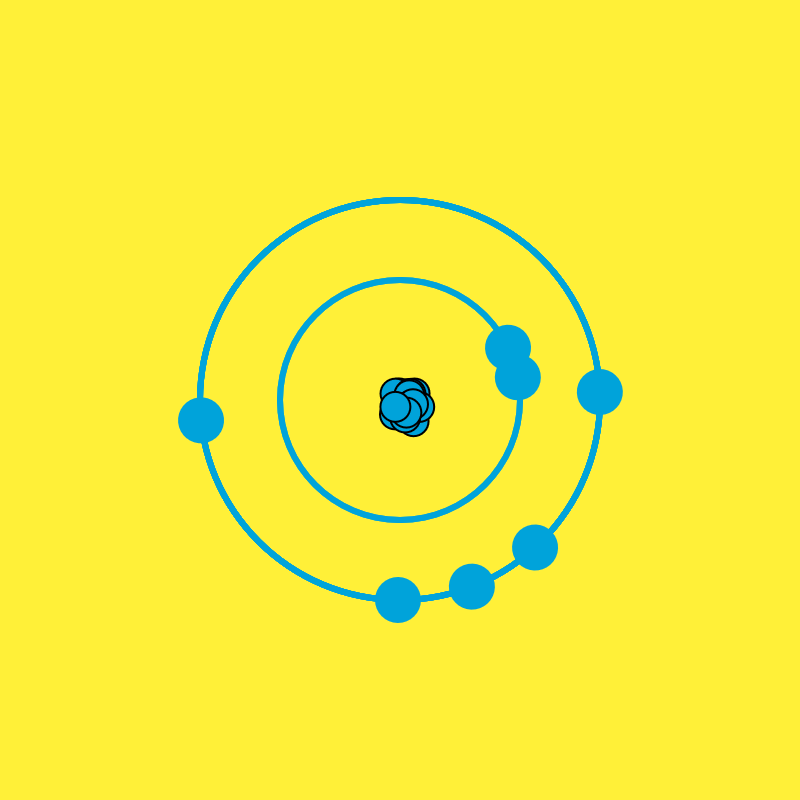
Well done article! with much effort.